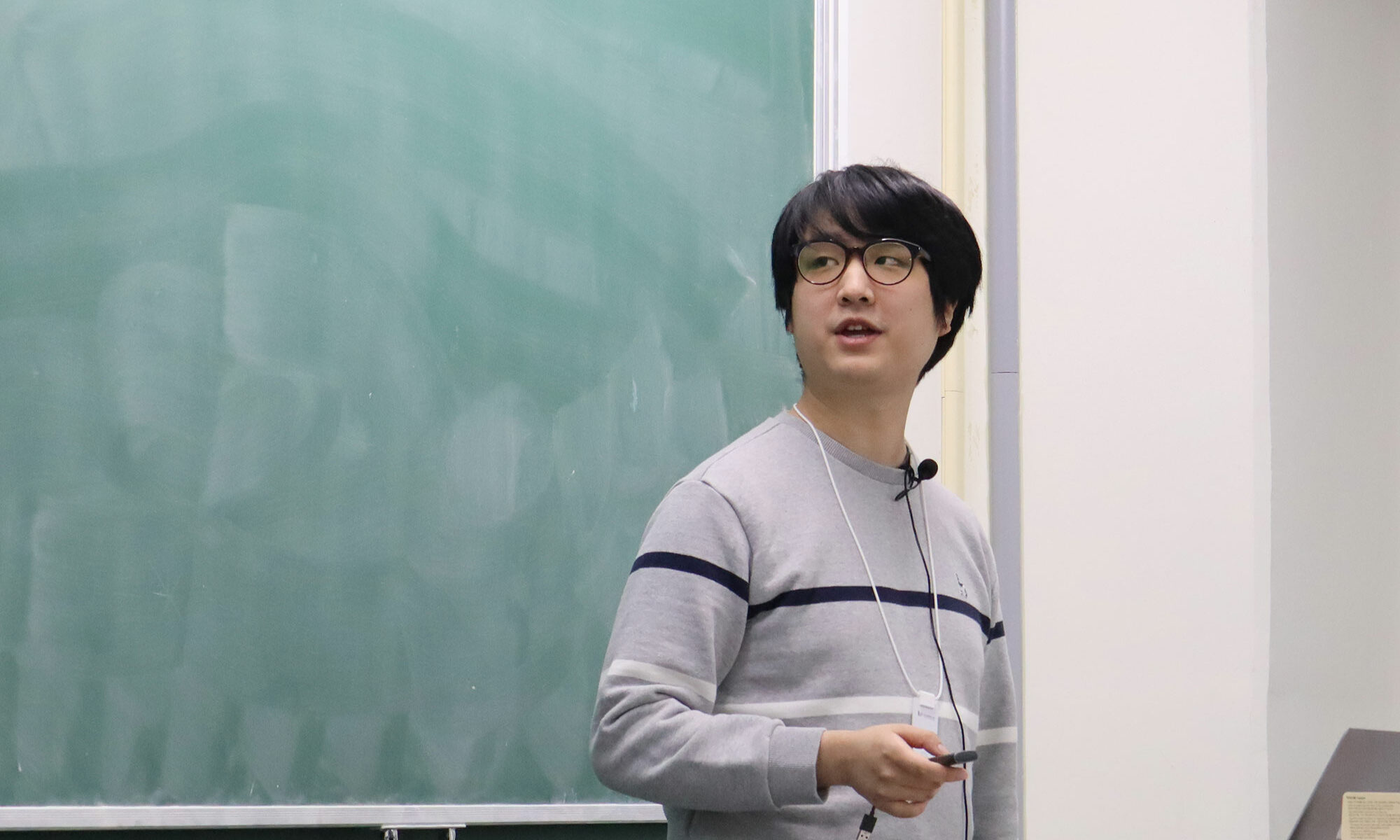On November 22, 2022, Seonghyuk Im (임성혁) from KAIST and the IBS Extremal Combinatorics and Probability Group gave a talk at the Discrete Math Seminar on the resolution of the Elliott-Rödl conjecture on embedding hypertrees in a Steiner triple system . The title of his talk was “A proof of the Elliott-Rödl conjecture on hypertrees in Steiner triple systems.”
Seonghyuk Im (임성혁), A proof of the Elliott-Rödl conjecture on hypertrees in Steiner triple systems
A linear $3$-graph is called a (3-)hypertree if there exists exactly one path between each pair of two distinct vertices. A linear $3$-graph is called a Steiner triple system if each pair of two distinct vertices belong to a unique edge.
A simple greedy algorithm shows that every $n$-vertex Steiner triple system $G$ contains all hypertrees $T$ of order at most $\frac{n+3}{2}$. On the other hand, it is not immediately clear whether one can always find larger hypertrees in $G$. In 2011, Goodall and de Mier proved that a Steiner triple system $G$ contains at least one spanning tree. However, one cannot expect the Steiner triple system to contain all possible spanning trees, as there are many Steiner triple systems that avoid numerous spanning trees as subgraphs. Hence it is natural to wonder how much one can improve the bound from the greedy algorithm.
Indeed, Elliott and Rödl conjectured that an $n$-vertex Steiner triple system $G$ contains all hypertrees of order at most $(1-o(1))n$. We prove the conjecture by Elliott and Rödl.
This is joint work with Jaehoon Kim, Joonkyung Lee, and Abhishek Methuku.
Seonghyuk Im (임성혁) gave a talk on the existence of a large complete topological minor in a graph without small dense subgraphs at the Discrete Math Seminar
On November 30, 2021, Seonghyuk Im (임성혁) from KAIST gave a talk at the Discrete Math Seminar on the existence of a large complete topological minor in a graph of bounded average degree when the graph has no small dense subgraphs. The title of his talk was “Large clique subdivisions in graphs without small dense subgraphs“.
Seonghyuk Im (임성혁), Large clique subdivisions in graphs without small dense subgraphs
What is the largest number $f(d)$ where every graph with average degree at least $d$ contains a subdivision of $K_{f(d)}$? Mader asked this question in 1967 and $f(d) = \Theta(\sqrt{d})$ was proved by Bollobás and Thomason and independently by Komlós and Szemerédi. This is best possible by considering a disjoint union of $K_{d,d}$. However, this example contains a much smaller subgraph with the almost same average degree, for example, one copy of $K_{d,d}$.
In 2017, Liu and Montgomery proposed the study on the parameter $c_{\varepsilon}(G)$ which is the order of the smallest subgraph of $G$ with average degree at least $\varepsilon d(G)$. In fact, they conjectured that for small enough $\varepsilon>0$, every graph $G$ of average degree $d$ contains a clique subdivision of size $\Omega(\min\{d, \sqrt{\frac{c_{\varepsilon}(G)}{\log c_{\varepsilon}(G)}}\})$. We prove that this conjecture holds up to a multiplicative $\min\{(\log\log d)^6,(\log \log c_{\varepsilon}(G))^6\}$-term.
As a corollary, for every graph $F$, we determine the minimum size of the largest clique subdivision in $F$-free graphs with average degree $d$ up to multiplicative polylog$(d)$-term.
This is joint work with Jaehoon Kim, Youngjin Kim, and Hong Liu.



